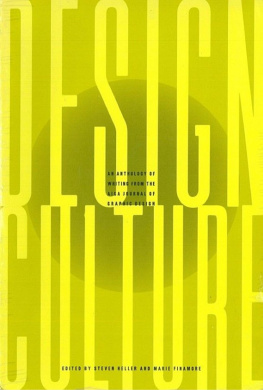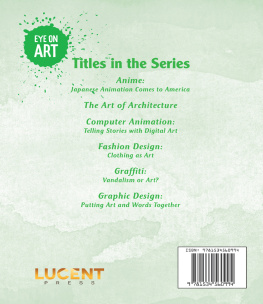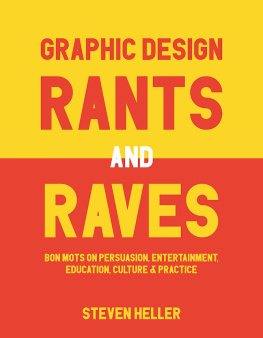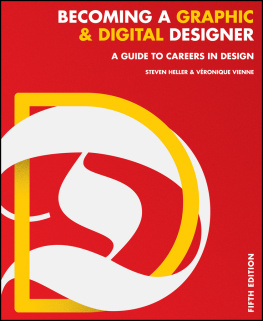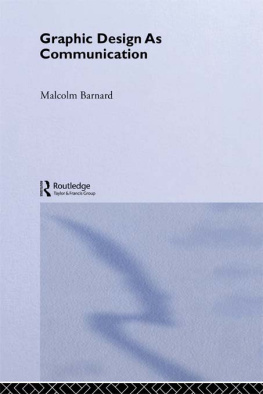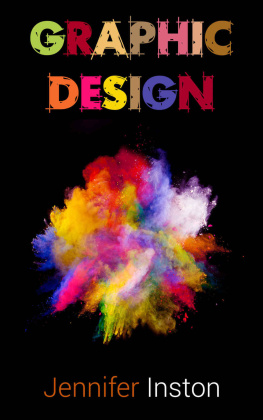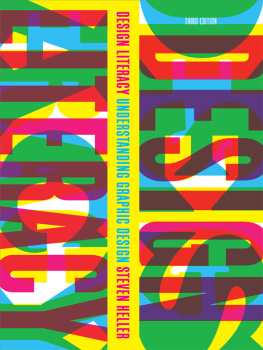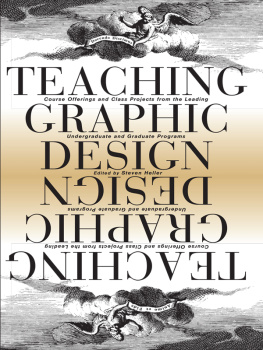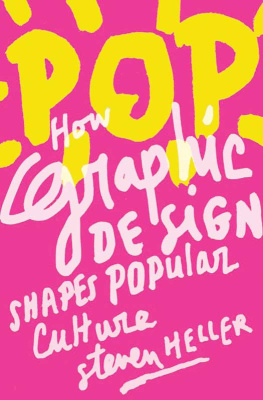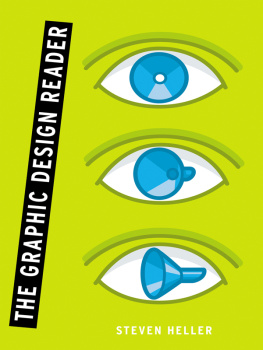DESIGN CULTURE

AN ANTHOLOGY OF WRITING FROM
THE AIGA JOURNAL OF GRAPHIC DESIGN
Edited by Steven Heller and Marie Finamore

Co-published with the American Institute of Graphic Arts
Copyright 1997, 2012 by The American Institute of Graphic Arts
All rights reserved. Copyright under Berne Copyright Convention, Universal Copyright Convention, and Pan American Copyright Convention. No part of this book may be reproduced, stored in a retrieval system, or transmitted in any form, or by any means, electronic, mechanical, photocopying, recording or otherwise, without the express written consent of the publisher, except in the case of brief excerpts in critical reviews or articles. All inquiries should be addressed to Allworth Press, 307 West 36th Street, 11th Floor, New York, NY 10018.
Allworth Press books may be purchased in bulk at special discounts for sales promotion, corporate gifts, fund-raising, or educational purposes. Special editions can also be created to specifications. For details, contact the Special Sales Department, Allworth Press, 307 West 36th Street, 11th Floor, New York, NY 10018 or .
15 14 13 12 11 5 4 3 2 1
Published by Allworth Press, an imprint of Skyhorse Publishing, Inc.
307 West 36th Street, 11th Floor, New York, NY 10018.
Co-published with the American Institute of Graphic Arts
164 Fifth Avenue, New York, NY 10010
Allworth Press is a registered trademark of Skyhorse Publishing, Inc., a Delaware corporation.
www.allworth.com
Designed by Woody Pirtle, Pentagram, New York, NY
Page composition/typography by Sharp Des!gns, Holt, MI
eISBN: 978-1-62153-170-8
This book is dedicated to
CAROLINE HIGHTOWER
executive director of the AIGA from 1977 to 1994,
without whom there would be no AIGA Journal.
CONTENTS
PREFACE
Richard Gref, Executive Director, American Institute of Graphic
T he American Institute of Graphic Arts is dedicated to advancing excellence in graphic design as a discipline, profession, and cultural force. The AIGA provides leadership in the exchange of ideas and information, the encouragement of critical analysis and research, and the advancement of education and ethical practice.
This anthology is an important contribution to our role in educating, enlightening, and informing current and future generations of designers. It serves to extend the reach of an eclectic range of critical writings on the trends and issues of graphic design, previously available only to AIGA members and a few individual subscribers. It validates the decision of Caroline Hightower to revive the Journal and Steven Hellers editorial leadership, without whose indefatigable quest for yet another angle on design this anthology would have been considerably thinner.
Design Culture demonstrates the AIGAs commitment to being a thoughtful and provocative design advocate on behalf of its ten thousand members, the design community as a whole, design educators and students, and a much broader audience interested in visual communication and popular culture.
ACKNOWLEDGMENTS
W e would like to thank everyone who has contributed articles and illustrations to the AIGA Journal over the years, as well as the various supporters who donated services and materials.
The Journal has been the result of a fruitful collaboration of the above-mentioned contributors as well as editors, managing editors, art directors, designers, and typographers. At different times, the following (in order of appearance) have been invaluable to its smooth operation:
EDITORS
Wylie Davis (19821983)
Rose DeNeve (19831985)
Steven Heller (1985present)
MANAGING EDITORS
Shelley Bance (19821985)
Marilyn Recht (1986)
Ruth Toda (19871990)
Philip F. Clark (19901993)
Marie Finamore (1993present)
ART DIRECTORS
Elton Robinson
Kit Hinrichs
Susan Limoncelli
Lisa Naftolin
Laurel Shoemaker
Michael Ian Kaye
DESIGNERS
Margaret Wollenhaupt
Lisa Bernich
Terri Driscoll
Callie Johnson
Susie Leversee
Julie Riefler
Jaye Zimet
Dimity Jones
Brett Gerstenblatt
E. J. Smith
Leslie Goldman
TYPOGRAPHERS
Susan Schechter
Ira Ungar
Rick Binger
Karen Krimmel
Boro Typographers
Jennifer Lawson
Alexis Siroc
Tammi Colichio
Tobias Frere-Jones
GUEST CO-EDITORS
Richard Saul Wurman
Nathan Gluck
Michael Bierut
Paula Scher
Randy Hipke
Rick Poynor
Samuel Antupit
Jessica Helfand
Ellen Lupton
DK Holland
Michael Rock
Sylvia Harris
Matthew Carter
Juanita Dugdale
William Drenttel
INTRODUCTION: TIME WELL SPENT
Steven Heller, Editor, AIGA Journal of Graphic Design
F ifteen years ago, the AIGA Journal of Graphic Design was an eight-page tabloid. Today, it is a seventy-two-page magazine. Although you might assume that this alone is a major accomplishment, in 1948 the first issue of the bimonthly AIGA Journal (the words graphic design were not yet included in the title) was a magazineand a fairly good one, too. Throughout the 1950s the format continued, and in 1966 it was expanded to include catalogs of the AIGA annual competitions. In the early 1970s, it foldedthe casualty of economic crisisand lay dormant until 1982, at which time the AIGA published a newsletter that gradually evolved into the Journal.
The revivified Journal had a lot of living up to do. The Journal of the forties and fifties offered the AIGAs one thousand or so members broad-based reportage and critical coverage of the graphic arts. It included essays by such luminaries as Herbert Bayer, Alvin Lustig, Paul Rand, Leo Lionni, Alexey Brodovitch, and Fritz Eichenberg (who was also one of the early editors). In unflattering contrast, the editorial content of the eighties Journal was initially at the press release level. Nevertheless, this was also a period of considerable change for the AIGA. In the institutes tidal shift from a small, exclusive club to a large professional organization with nationwide chapters, the AIGA Journal could not afford to be merely a parochial newsletter. Somehow, it had to become a forum for design issues.
The notion of graphic design criticism had been discussed for some time as a panacea for the graphic design fields netherworld status between art and commerce. For the editor of the AIGA Journal, the somewhat nebulous term pointed toward a new direction. In 1986, the Journal switched from its exclusive AIGA orientation to more incisive analysis, reportage, and criticism of the field as a whole. Borrowing an op-ed page model, the Journal became an outlet for numerous viewpoints solicited from design practitioners, academics, and journalists as well as nondesigners, among them social critics and popular historians. Within a short time, the Journal was transformed from an AIGA house organ into an AIGA-sponsored distillery of ideas.
In the 1970s, most professional (or trade) magazines had become instruments for promoting designers and their work. Since Graphic Design USA, the omnibus launched in 1980 that includes each years award-winning work, satisfied the memberships need for colorful reproductions of successful design, the AIGA could afford to allow the

